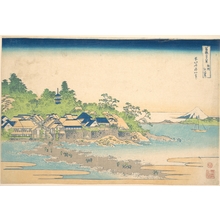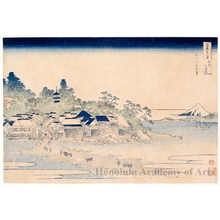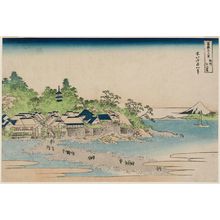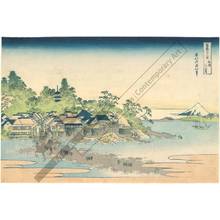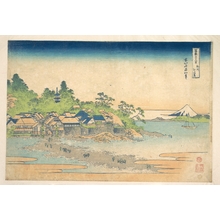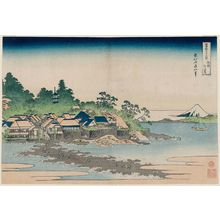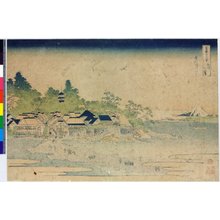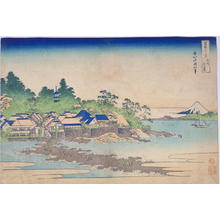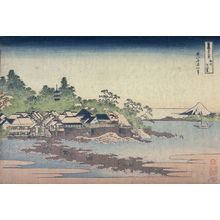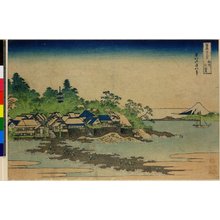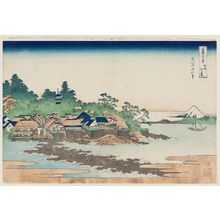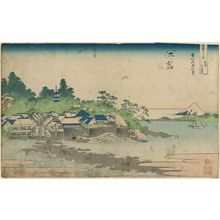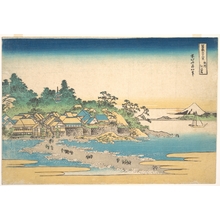葛飾北斎による浮世絵「Enoshima in Sagami Province」
作者:葛飾北斎
作品名:Enoshima in Sagami Province
制作年:c. 1830 - 1834
詳細:詳細情報...
情報源:ホノルル美術館
浮世絵(全 5,476 件)を表示...
説明:
Enoshima is a small island lying off Kamakura on the Pacific coast, some 35 miles south of Tokyo. It attracted large numbers of pilgrims, who visited a temple there that was dedicated to Benzaiten, the Buddhist female deity of long life, good fortune, and victory in war. Seen from a high position on the mainland, Hokusai depicts the island’s large temple compound. The tiny pilgrims, some riding horses led by men, some carried in a palanquin, and some on foot, are crossing a sandbar at low tide to reach the island. The approach to the temple is marked by two stone lanterns, one on each side of the entrance to the compound, where steps lead to the main building of the temple. Fuji is visible across the water on the right side. Bubbles in the water at low tide are indicated with numerous tiny white dots, showing the technical excellence of the printing. The composition, however, suffers because of Hokusai’s excessive interest in minute details, resulting in a lack of main composition focus. The key-block was printed in blue. The publisher’s and the censor’s seal are visible in the lower right corner. (The Asian Art Museum of San Francisco, HOKUSAI AND HIROSHIGE – Great Japanese Prints from the James A. Michener Collection, Honolulu Academy of Arts: The Asian Art Museum of San Francisco, 1998 Page 81Cat. 32) **************** The small island of Enoshima off of Kamakura is famous for its temple dedicated to the goddess of good fortune, Benzaiten. It was an important pilgrimage site during the Edo period, and pilgrims can be seen crossing from the mainland on a small strip of land that became dry during low tide. The temple complex lies beyond, with a pagoda rising in the background. The stacked roofs of the pagoda on the left balance the triangular form of Mount Fuji on the right, providing the print with a sense of balance that is enlivened by the diagonal line of the crossing. Enoshima was a popular subject for ukiyo-e artists, including both Hokusai and Hiroshige. Prints like this would have served as souvenirs for pilgrims and other travelers to the greater Edo area. Hokusai’s use of many tiny dots to render both the forest and the receding water recalls pointillism, a Western painting technique developed in the 1880s in which tiny dots are combined to form a picture. It also evokes traditional Chinese brush techniques. In his efforts to study and incorporate a wide range of styles, Hokusai foreshadowed the increasing globalization of artistic styles that resulted from increasing international trade in the late nineteenth century. “Hokusai’s Summit: Thirty-six Views of Mount Fuji” (09/24/2009-01/06/2010) ******************************
類似の浮世絵
